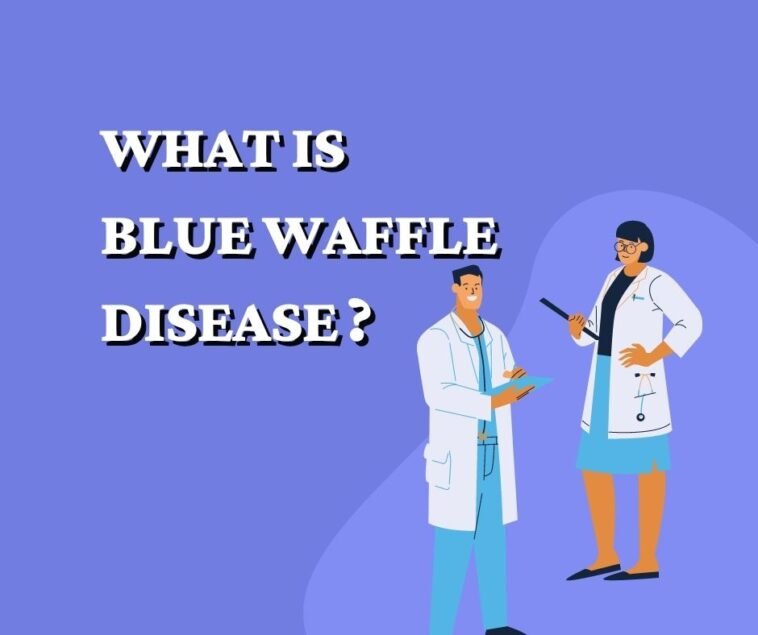In 2010, a notorious internet hoax surfaced, warning of a fabricated sexually transmitted disease known as “Blue Waffle Disease,” purportedly causing the vaginal area to turn blue. This fictitious ailment gained national attention when a New Jersey council person referenced it as a looming threat to women’s health.
This incident underscored the alarming ease with which misinformation can proliferate, stirring unwarranted panic and distorting perceptions of genuine sexually transmitted diseases (STDs).
Table of Contents
- The Fabrication of Blue Waffle Disease
- Unpacking the Origin of the Hoax
- Debunking the Myth and Addressing Consequences
- Understanding STD Symptoms
- Promoting STD Testing
- Sexually Transmitted Diseases
The Fabrication of Blue Waffle Disease
Contrary to popular belief, Blue Waffle Disease is entirely fictitious, concocted by online pranksters in 2010. Such hoaxes exemplify the deceptive tactics employed across the internet, ranging from spreading falsehoods to phishing, promoting dubious products, seeking charitable donations, or outright malice.
Unpacking the Origin of the Hoax
The hoax commenced as a bait-and-switch meme, featuring a challenge to users: “Bet you can’t find me on Google image search.” Those who fell for the ruse stumbled upon an image of purportedly diseased, blue-tinted labia. The term “waffle” was used as slang for the vagina, lending the fabricated condition its name.
The hoaxsters described Blue Waffle Disease as a sexually transmitted infection causing lesions, itching, burning, and a foul-smelling discharge resembling symptoms of actual STDs like gonorrhea or chlamydia. The blue discoloration was likely a result of staining with gentian violet rather than a legitimate medical condition.
Debunking the Myth and Addressing Consequences
Despite conclusive medical evidence refuting the existence of Blue Waffle Disease, social media hysteria persisted. The hoax’s intended goal was to instigate alarm and distress, a tactic that unfortunately succeeded, contributing to a phenomenon known as “Munchausen by Internet,” characterized by fabricating illnesses for attention or mockery.
The pervasive narrative surrounding the hoax suggested stigmatizing sexually active women as “abnormal” and insinuated repercussions for their actions, underscoring how such misinformation primarily targeted women.
Understanding STD Symptoms
The symptoms associated with Blue Waffle Disease closely mirrored those of legitimate STDs affecting women, contributing to the hoax’s deceptive allure. Symptoms indicative of various STDs include:
- Bacterial Vaginosis: Characterized by a “fishy” odor, redness, swelling, itching, bleeding during intercourse, and vaginal discomfort.
- Chlamydia: Manifesting as pain during urination, lower abdominal pain, discomfort during intercourse, abnormal bleeding, and vaginal irritation.
- Gonorrhea: Symptoms include vaginal itching, discharge, pain during urination or intercourse, abnormal bleeding, and redness.
- Genital Herpes: Typically marked by redness, swelling, painful blisters or sores, burning sensations, and abnormal discharge.
- Human Papillomavirus (HPV): Indications may include vaginal irritation, painless warts, and discomfort.
Promoting STD Testing
Given the asymptomatic nature of many STDs, individuals engaging in unprotected sex or possessing risk factors are urged to undergo testing. Seeking guidance from healthcare professionals is crucial for accurate diagnosis and appropriate management.
In the United States, the Centers for Disease Control and Prevention (CDC) recommends STD screenings for sexually active women under 25, those over 25 with risk factors, pregnant women, and individuals aged 13 to 64 during routine medical evaluations.
United States women are advised to get tested for STDs by the Centers for Disease Control and Prevention (CDC):
- Sexually active women under 25- Gonorrhea and chlamydia
- Sexually active women 25 and over with risk factors- It is also recommended to have annual gonorrhea and chlamydia screenings.
- Pregnant women- Screening for syphilis, HIV, and hepatitis B is recommended early in pregnancy, as well as for gonorrhea and chlamydia for pregnant women with risk factors.
- All people 13 to 64 years- A routine medical visit should include HIV testing at least once.
By dispelling myths like Blue Waffle Disease and advocating for accurate information and proactive health measures, individuals can safeguard their well-being and combat the propagation of harmful misinformation.
Sexually Transmitted Diseases
Many of the symptoms of blue waffle disease are similar to those associated with STDs in women, which is one reason why the hoax fooled so many people. Symptoms related to:
- Bacterial Vaginosis- A “fishy” smell, redness, swelling, and itching in the vaginal area, bleeding during sex, and itchiness in the vaginal area.
- Chlamydia- Pain with urination, lower abdominal or pelvic pain, pain with intercourse, bleeding with sex, bleeding between periods, redness, swelling, itching in the vaginal area.
- Gonorrhea- Itching, redness, and swelling of the vaginal area, vaginal discharge, pain with urination, pain with intercourse, bleeding during sex, bleeding during periods.
- Genital herpes- Symptoms of vaginal redness, swelling, itching and burning, painful vaginal blisters and sores, and vaginal discharge.
- Human papillomavirus- Irritation in the vaginal area and painless warts.
Please Subscribe Us to get updated with Qatar News, Saudi News, Kuwait News, Health News, UAE News, Iqama, Visa, Jobs, Banking and More



